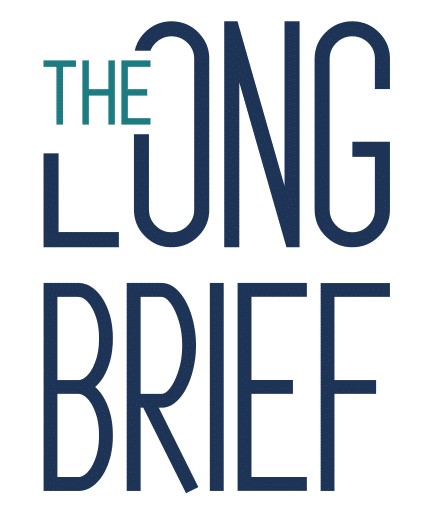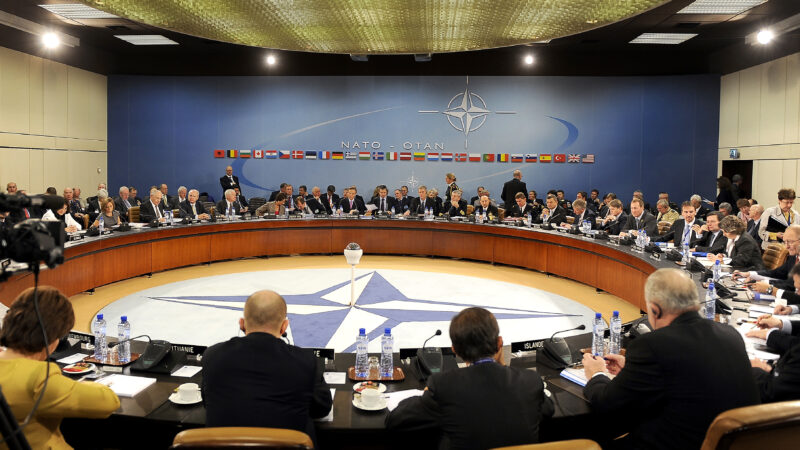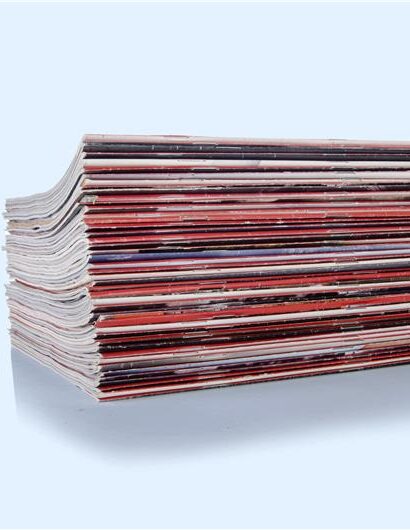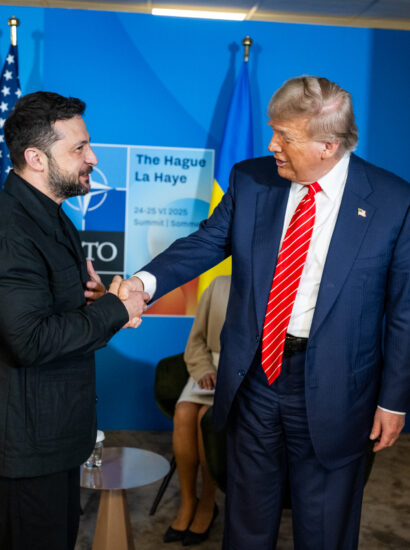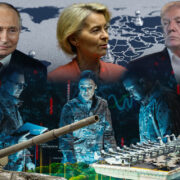The 61-year-old Dutch Admiral Rob Bauer is the Chair of the Military Committee of NATO. As the most important military adviser to Secretary General Stoltenberg, Admiral Bauer is NATO’s most senior military officer. He assists and advises the North Atlantic Council (NAC), the Alliance’s principal political decision-making body. Admiral Bauer has held the position since 2021. During the past year, he has taken a more public role. Since Russia’s full-scale invasion of Ukraine, Admiral Rob Bauer has adopted an increasingly assertive tone when engaging the public.
He highlights the short- to mid-term threat of Russia, along with the long-term threat of China. He criticizes the insufficient European artillery production and calls for more active private sector participation in the military-industrial complex. “We need to be faster and better than our competitors in every aspect,” he says.
Some, including non-pro-Russian accounts, have accused him of fear and warmongering. As Ukraine suffers military setbacks in the first half of 2024, European security is in a precarious state.
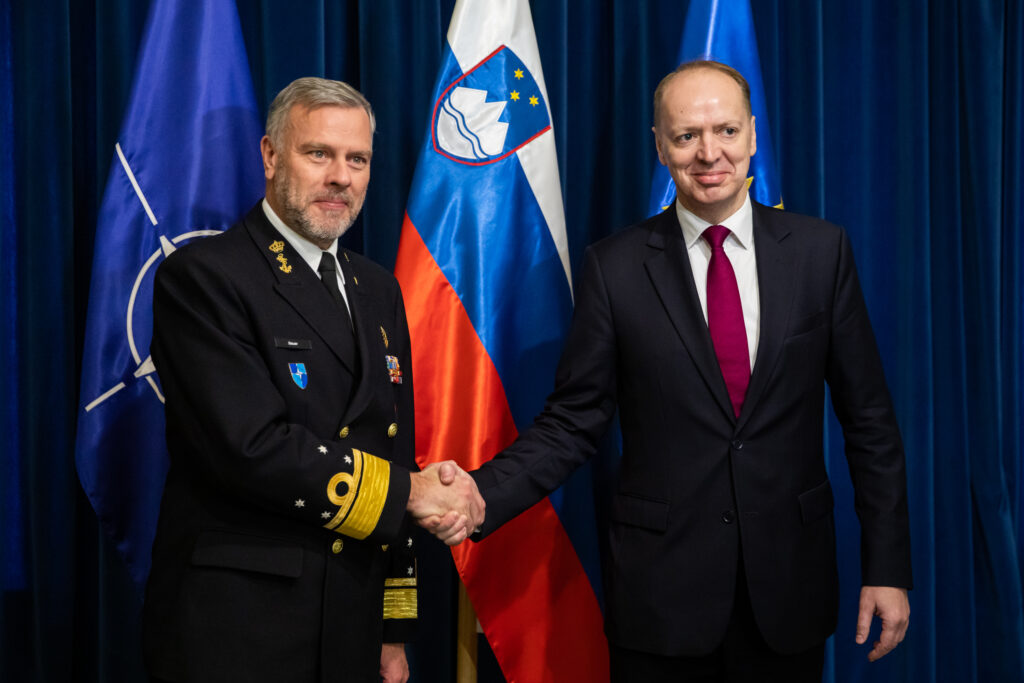
Chair of the NATO Military Committee Admiral Bauer meets with Slovenian State Secretary Andrej Benedejčič in 2023 (Photo: Wikimedia Commons)
Challenges in European Artillery Production
In January 2024, Sweden’s Minister for Civil Defence Carl-Oskar Bohlin stated publicly that the country should be able to face war. He called for the whole-of-society prepare for it. He was backed up by the commander-in-chief, Michael Brydén, who said that “we need to realise how serious the situation really is, and that everyone, individually, needs to prepare themselves mentally”. Swedes reacted by stockpiling supplies, and this approach was publicly praised by Admiral Bauer. A month later, after mounting pressure, Hungary approved Sweden’s accession to NATO.
The crucial role of the European private industry in the production of artillery pieces, munitions and military vehicles is repeatedly highlighted by Rob Bauer. Contrary to the Russian military-industrial complex, European companies are profit-oriented, and the supply is based on orders and contracts. In the US, the Army owns the facilities that make the shells, thus the ramp-up can be pushed faster.
In the Old Continent, if a company is confident about the long-term demand for its supply, investments can be made accordingly. At the same time, companies hesitate to make capital-intensive investments for short-term demand, as amortization costs outweigh long-term profitability.
In the words of Estonian Defense Minister Hanno Pevkur in 2023, Europe suffers from a chicken-and-egg problem. Companies tell him, ‘Give us contracts and then we can produce,’ and then the government responds that, ‘there is a clear demand. Just start to increase your production.’ This is one of the reasons why the ramping up of European artillery production – and the building of accompanying industrial infrastructure – has been slow. And Admiral Bauer goes even further than that.
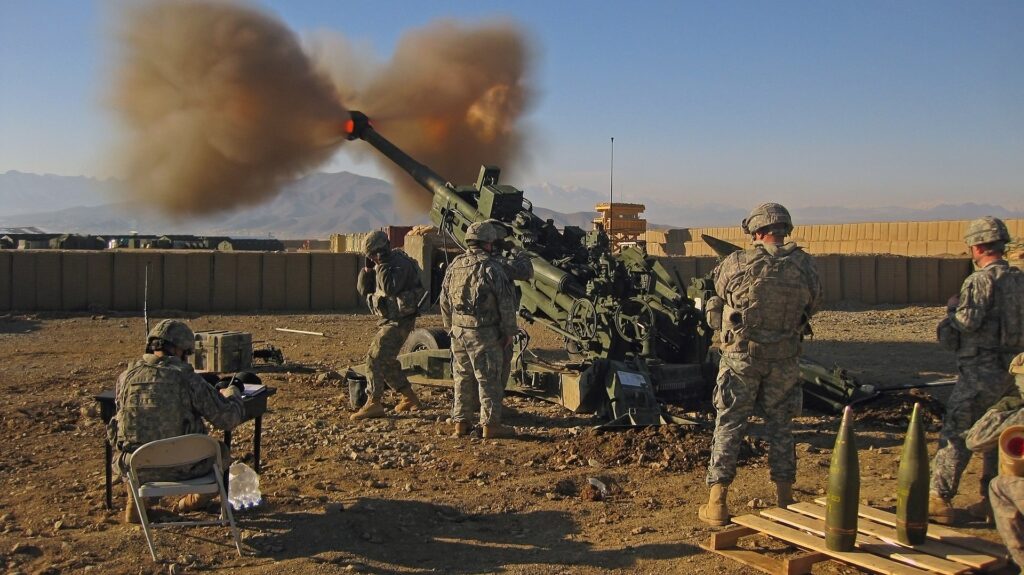
7-person gun crew firing a US M777 Light Towed Howitzer, War in Afghanistan, 2009 (Photo: Jonathan Mallard / Wikimedia Commons)
Impact of ESG Metrics on Defense Investments
During a May 9 press conference, Admiral Bauer highlighted the negative effects of ESG (Environmental, Social, and Governance) metrics. Important public investment actors, such as pension funds, hesitate to invest in defence companies. In the words of Rob Bauer, “pension funds and banks say it’s not ethical to invest in the defence industry, which is mindboggling.” Private industries still delay investing into the European military.
Europe needs faster artillery production now, more than ever, both for the defence of Ukraine and NATO territory.
NATO and the EU have both promised hundreds of thousands of munitions for Kiev, but delivery has been delayed. Instead, former NATO official and current Czech President Petr Pavel tries to act alone to supply artillery munitions to Ukraine. The Czech-initiative’s first shipments are supposed to happen in June, but it has run into obstacles. According to open source information, there aren’t 180 000 shells available in the market to be delivered, even at a cost of $5000 per unit (which is five times what the Russians are paying). The whole-of-society, or whole-of-Europe approach in defence, is desperately slow.
The Lichterfelde Factory Fire Incident
Weapon production for Ukraine is one issue, the defence of NATO territory is another. On May 3, the Diehl Metall factory in the Lichterfelde suburb of Berlin caught fire. European media covered, that due to dangerous chemicals stored on site, including sulfuric acid and copper cyanide, toxic smoke escaped into Berlin’s air. Highlighted was also that the plantproduces material for the European IRIS-T air-defence system, which Ukraine also uses. What hasn’t been publicly discussed, is the reason for the fire.
On the May 9 panel that Admiral Bauer participated in, he provided important details concerning the fire. The question he answered wasn’t specifically about that, but he went into the topic voluntarily.
In the Admiral’s own words, he said that “there’s growing proof that it’s probably sabotage, and that one can expect that the Russians are engaged in that. So, it’s not all in Ukraine, it’s not in Syria, it’s not in faraway countries, it is in Europe, in Western Europe”.
Is what the Admiral said fear- and warmongering? The NATO military commander made it clear that Russian agents are active – and some could say attacked – European and NATO territory. NATO remains quiet about the incident. No communiqué was issued, either by the Allies or Secretary General Stoltenberg. It was shrugged under the rug. Russia was half-heartedly put blamed, but not provoked. It got away with it, for now. At least publicly.
In modern times, the fear of provocation has caused European defence to respond slowly. After the Cold War, NATO military exercises were held distant from the Russian border (even following the 2008 Russo–Georgian War). At the time of writing, Ukraine is still not allowed to use Western-supplied long-range missiles to target military concentrations inside Russia. However, more and more important NATO voices are calling for change.
Ukraine’s 2024 military setbacks have been acknowledged and voiced by important figures in the West. Apart from NATO’s military chief Rob Bauer, Secretary General Stoltenberg commented in April that “delays in support have meant serious consequences on the battlefield”. He said these words before the 2024 May Kharkiv Oblast offensive by the Russian Armed Forces, which led to Russia’s biggest territorial gains in 18 months.
The Struggle for Kharkiv
As Western political and military leaders ponder about allowing Ukraine to strike within Russia, supplying Taurus missiles, or shooting down Russian airborne weapons from NATO territory, Ukraine is attempting to slow down Russian advancements. The fighting rages on in northern Kharkiv, near the Russian border, in the city of Vovchans’k. It had a pre-war population of 17 thousand, most of whom are now displaced.
The Kharkiv battle shows how difficult it is for Ukraine to defend.
There, Russia launched a major ground offensive in late spring, flowing in from Belgorod Oblast, on the Russian side of the border. The Russian Armed Forces’ aircraft could launch its weapons, especially the difficult-to-defend-against FAB-500 glide bombs, while remaining well inside its own territory. Furthermore, the Russia artillery could also operate without entering Ukraine. A paradoxical example surfaced ina video, when a Russian vehicle carrying Grad multiple rocket-system stopped ongoing traffic in Russia in order to discharge. Civilian vehicles had to wait patiently as rockets were tossed to the other side of the border.
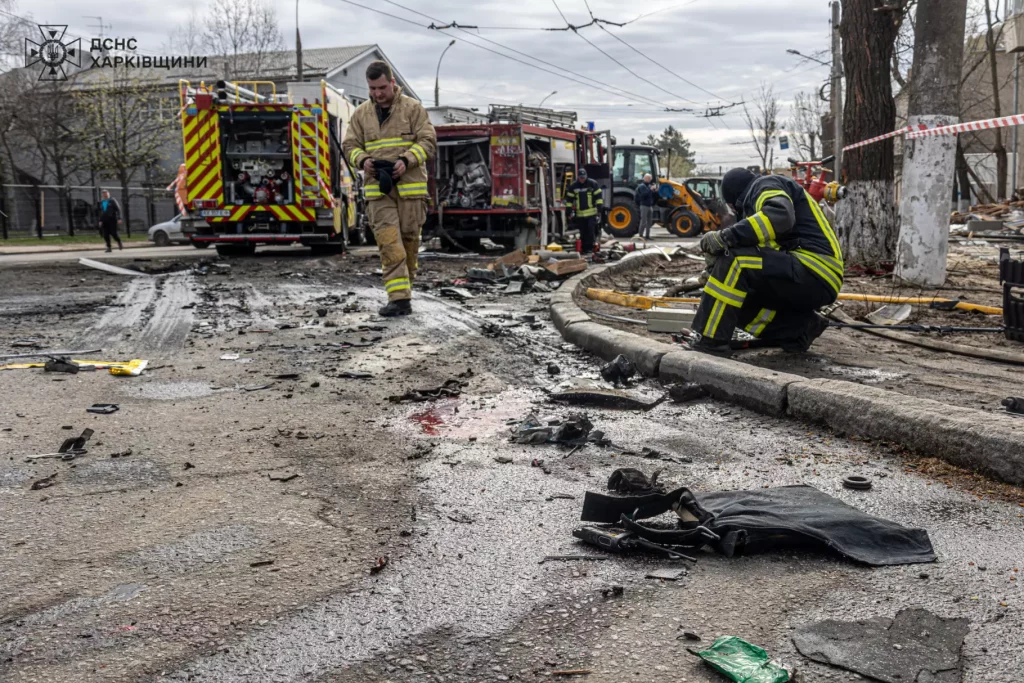
Destructions in Kharkiv after Russian drone attack in the night on April 4, 2024 (Photo: State Emergency Service of Ukraine / Wikimedia Commons)
Incremental Russian Gains, but Renewed Ukrainian Pushback
According to publicly available maps that monitor the battlefield, such as Deepstate, the Kharkiv offensive had stalled by late May. President Putin spun the lack of advancements by stating that reaching Kharkiv city itself was not their goal. If the objective was to draw in stretched Ukrainian manpower, then another Russian offensive further west, near the town of Sumy might await. Because the heaviest fighting is further east, in Donetsk.
Since the last quarter of 2023, Russia has made slow and incremental gains around Bakhmut. By November, they took the town of Khromove, and by April 2024, Ivanivske. These were important settlements on the road to the still Ukrainian-held town of Chasiv Yar. Holding that city is key for Kyiv, as from there Kramatorsk and Kostiantynivka could be threatened. An important logistical highway and flatlands separate these towns. The latter is suitable terrain for Russian artillery. However, the arrival of the long-awaited US military support seems to have aided Ukrainian forces. Several long-range missiles have attacked Crimea this spring. That forces Russia to recalculate and redistribute forces.
The Ukrainian Armed Forces struck repeatedly where Russia’s defence is the thickest. In May, long-range missiles, likely ATACMS, reached the Russian-held airfield of Belbek in occupied Crimea. According to publicly available satellite images, at least two MiG-31 and one Su-27 aircraft were destroyed.
Even more important, was the successful targeting of a Russian S-400 air defence system in Crimea. Ukraine managed to hover a drone above the system, capturing on video the S-400’s attempts to shoot down incoming missiles. At least $800 million were lost for Russia, along with an important protection layer.
Renewed US supplies have concrete effects on the battlefield. Positively for Ukraine, negatively for Russia.
Admiral Bauer’s warnings, coupled with the logistical challenges in artillery production, all highlight the need for a coordinated, swift European response. The successful Ukrainian defence in Kharkiv and near Chasov Yar show just how much impact western weapons have in capable hands. We remain far away from a new Ukrainian counter-offensive. But with sufficient supplies Ukraine can gain valuable time for a renewed push.
